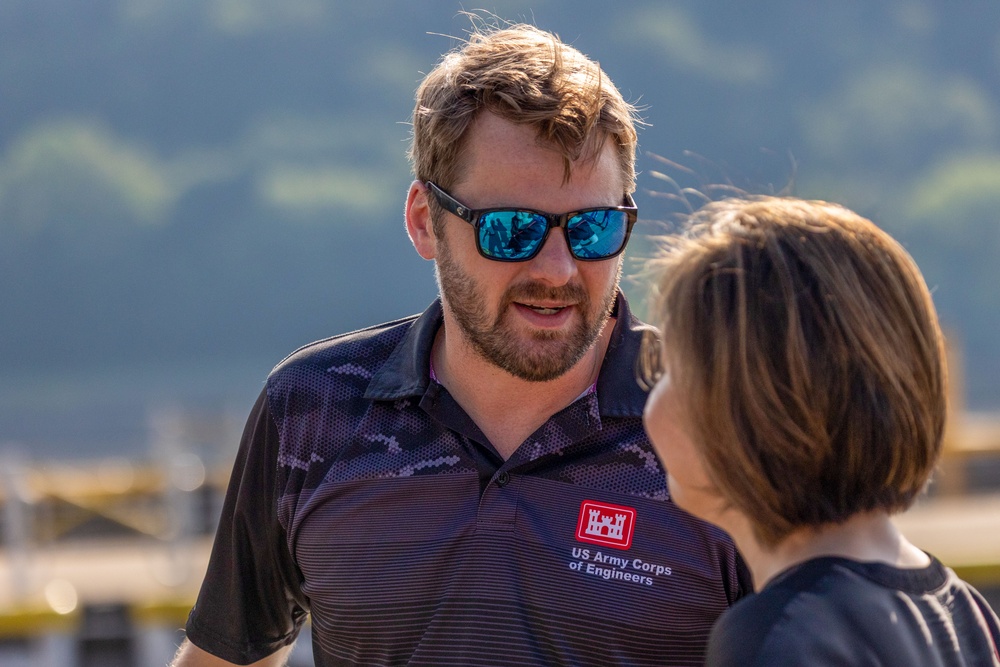
Dr. Anton Netchaev, a senior scientific technical manager for the U.S. Army Corps of Engineers Research and Development Center (ERDC), discusses survey results for a semi-autonomous underwater vehicle (AUV) during a field test at New Cumberland Locks and Dam in Stratton, Ohio. The AUV was built by Carnegie Mellon University spinoff Aquatonomy, which led the technical portion of the test, and overseen by ERDC.
Remote-operated vehicles currently in use by the Pittsburgh District’s dive team provide an overhead, “airplane-view” sonar perspective of submerged infrastructure. The AUV, however, uses a pan-tilt camera system so inspectors can obtain vertical views of walls and gate components, and visualize the vehicle’s position with a 360-degree sonar view.
The AUV aims to reduce unnecessary exposure and improve planning, inspections, safety, and access to areas which may be difficult, hazardous or hard-to-reach. In practice, the AUV would primarily assist teams conducting underwater inspections, such as the district’s dive team. The team is responsible for inspecting submerged infrastructure such as locks and dams on the Monongahela, Allegheny and Ohio rivers, as well as 16 district-operated reservoirs in the region. They also respond to emergencies, such as debris impeding locking operations, and average 75 days in the water per year. (U.S. Army Corps of Engineers photo by Andrew Byrne)
| Date Taken: | 07.24.2025 |
| Date Posted: | 09.25.2025 14:38 |
| Photo ID: | 9339816 |
| VIRIN: | 250724-A-XW512-1634 |
| Resolution: | 5472x3648 |
| Size: | 4.11 MB |
| Location: | STRATTON, OHIO, US |
| Web Views: | 22 |
| Downloads: | 2 |

This work, How an Automated Underwater Vehicle Cuts Underwater Risk, Cost and Guesswork [Image 11 of 11], by Andrew Byrne, identified by DVIDS, must comply with the restrictions shown on https://www.dvidshub.net/about/copyright.